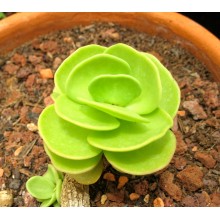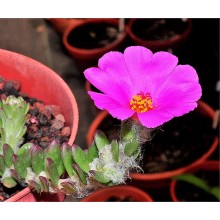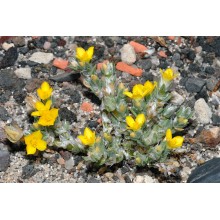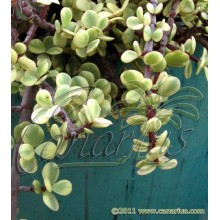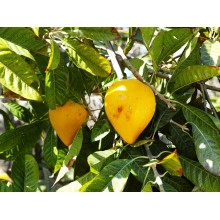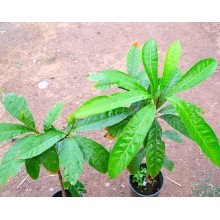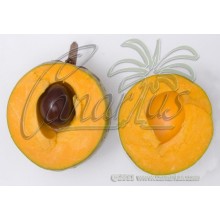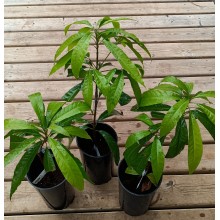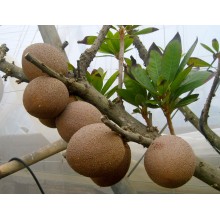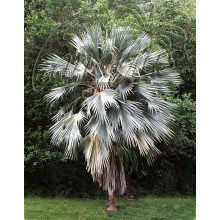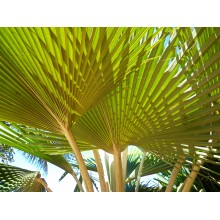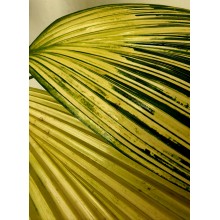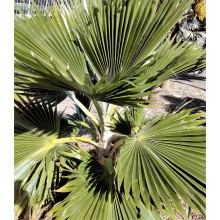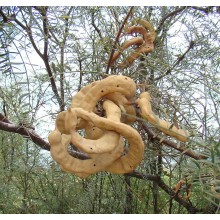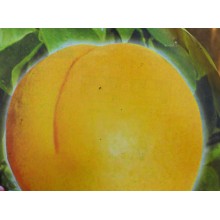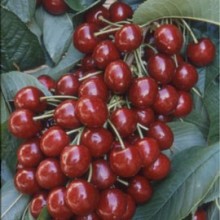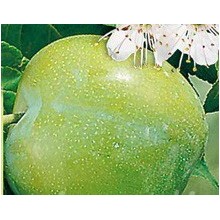General Plants There are 1883 products.

If you like exotic plants, you just came to the right place. Canarius offers the hard-to-find exotic plants which are seldom available in garden centres. Our shop has natural species as well as rare hybrids. We offer exotic plants from the Canary Islands.
Orders are sent to anywhere in Europe and also worldwide. Parcels will reach your home in a few days after shipping (but we also need some days for processing). Feel free to contact us if you have any questions.
Subcategories
-
Succulents
World deserts and dry areas are home to the most interesting plants. Canarius offers an increasing selection of succulent plants of maximum quality, because they are grown outdoors, under the full sun of the Canary Islands.
Succulents or "fat plants" are water-retaining species, adapted to dry conditions. They store succum (juice, water) in their leaves, stems or roots, and often show a stout and fleshy appearance.
-
Exotics
Exotic plants are species from other parts of the world, and they usually have ornamental qualities: a lush foliage, colorful flowers, unusual shapes... Here you can find a great variety of exotic plants: from Bromeliads and Heliconias, to pamls and houseplants.
Exotic plants do not have a particular use. Collectors buy this kind of plants for their rarity, for indoor or outdoor decoration, depending on their features.
-
Fruit, Herbs & Medicinals
Fruit, Herbs & Medicinal plants are focused on getting a better health. In this section, each type of plant produce healthy effects, both fruit trees (Feijoa, Pineapple, Fina de Jete...) and plants for health, such as Graviola, Aloe vera, Callisia fragrans...
In the normal metabolism of all living beings, the organism produces some substances from nutrients latent in the environment; some of these chemicals are part of the process in all (or almost) sort of species. Normally, the useful compounds are concentrated in some of its parts: leaves, seeds, flowers...
Find out your advisable plant and buy it online!
-
Special
On canarius.com we try to remove limits in the field of botany. On our online store we try to facilitate the purchase/sale of plants to anywhere in the world. That's why, we grow from the most common species to the most special plants, as we can see in this section.
-
Portulaca molokiniensis
Portulaca molokiniensis
1-2 year old seedling. The Hawaiian archipelago is known for its lush tropical vegetation and few succulents occur in the native flora. This portulaca is a hard-to-find gem, admired by collectors for its compact, symmetrical habit. Well grown plants are truly beautiful and bear yellow flower heads. This endangered species only occurs on a few islets.
24,50 € -
Portulaca werdermannii
Portulaca werdermannii
Cute portulaca species, branched, with very hairy leaves and showy purple flowers. It blooms profusely through the warmer months of the year.
20,50 € -
Portulaca wightiana
Portulaca wightiana
Tuberous" Portulaca with a thick caudex taproot, with stems bushily branched, articulated, up to 7 cm high It blooms profusely with yellow flowers and this miniature makes a very ornamental effect.
16,30 € -
Portulacaria afra variegata
Portulacaria afra variegata
Cont.= 8,5 cm. Variegated selection of the popular succulent shrub with small round leaves. This cultivar has a beautiful cream and green variegation. The stems are reddish brown. It is very easy to grow, but slow.
10,40 € -
Pouteria campechiana ' Bruce ' - Canistel
Pouteria campechiana ' Bruce ' - Canistel
Grafted tree. Canistel or Yellow Sapote is a sweet tasting large fruit, from an evergreen tropical tree native to Central America, cultivated and selected by pre-Columbian civilizations. The fruit of this cultivar is large and rounded.
54,50 € -
Pouteria campechiana ' Ross ' - Ross Sapote
Pouteria campechiana ' Ross ' - Ross Sapote
Ross sapote is a truly different cultivar of Pouteria campechiana, so different that experts say that it could well be an undescribed species of Pouteria. It is very good in taste and texture, more similar to Pouteria lucuma (lucumo) than to Pouteria campechiana (canistel).
72,00 € -
Pouteria lucuma 'La Molina 4'
Pouteria lucuma 'La Molina 4'
Grafted Tree. La Molina 4 is an excellent variety selected in Peru, with large, fleshy fruits. Lucumo, or Egg-Fruit, is a tree from the cool Andean valleys, at 1000-2400 m. It fruits outdoors with no protections in the southern, coastal Mediterranean.
64,50 € -
Pouteria macrophylla - Cutite
Pouteria macrophylla - Cutite
Pouteria macrophylla is rare fruit tree from the sapotaceae family. The tree grows usually 8 to 15 m tall. It is native to the Brazilian Amazon.We offer 70/80 cm grafted plants.
92,60 € -
Pouteria sapota 'Pantin' - Mamey Colorado
Pouteria sapota 'Pantin' - Mamey Colorado
Tall Grafted tree in 13x27 cm pot. Red Mamey is a tropical fruit tree native to Central America. Incredibly sweet and attractive. This variety Pantin is the best Cuban selection, with larger, excellent fruits.
64,50 € -
Pritchardia hillebrandii 'Blue Moon'
Pritchardia hillebrandii 'Blue Moon'
Compact, silvery-blue form of Pritchardia hillebrandtii, with black fruits, originated in a small islet in Hawaii. Please be patient, this plant will not show any blue until late.
34,70 € -
Pritchardia minor
Pritchardia minor
This is the smallest of all Pritchardia species! It is endangered and native to the island of Kauai, at 500-1300 m elevation, so it is able to grow in cool conditions.
42,00 € -
Pritchardia remota 'Variegata'
Pritchardia remota 'Variegata'
Prithchardia remota comes from a very harsh island in Hawaii and it is possibly the best for mediterranean conditions. This year we have spotted a few variegated Pritchardias in a batch of P. remota. h= 70 cm
112,20 € 132,00 €Reduced price! -
Pritchardia thurstonii
Pritchardia thurstonii
Pure beauty lives in this small to medium sized fan palm. Leaves are beautifully stiff and plicated as in an accordeon. Fruits are held in small bunches hanging on long, arching rachis. This palm grows wild in the most remote islets in the pacific.
29,30 € -
Prosopis chilensis 'Large Fruited' – Chilean Carob Tree
Prosopis chilensis 'Large Fruited' – Chilean Carob Tree
Small tree from arid areas in N. Chile, S. Peru and N. Argentina, with feathery "Mimosa leaves". The beans are used in a way similar to carobs, to make a sweet flour that can be added to desserts, pastries, soups and even ice-cream. Just like for carobs, the dried pods can be eaten raw as a snack.
46,20 €
At the moment there are few products in this category General Plants




















